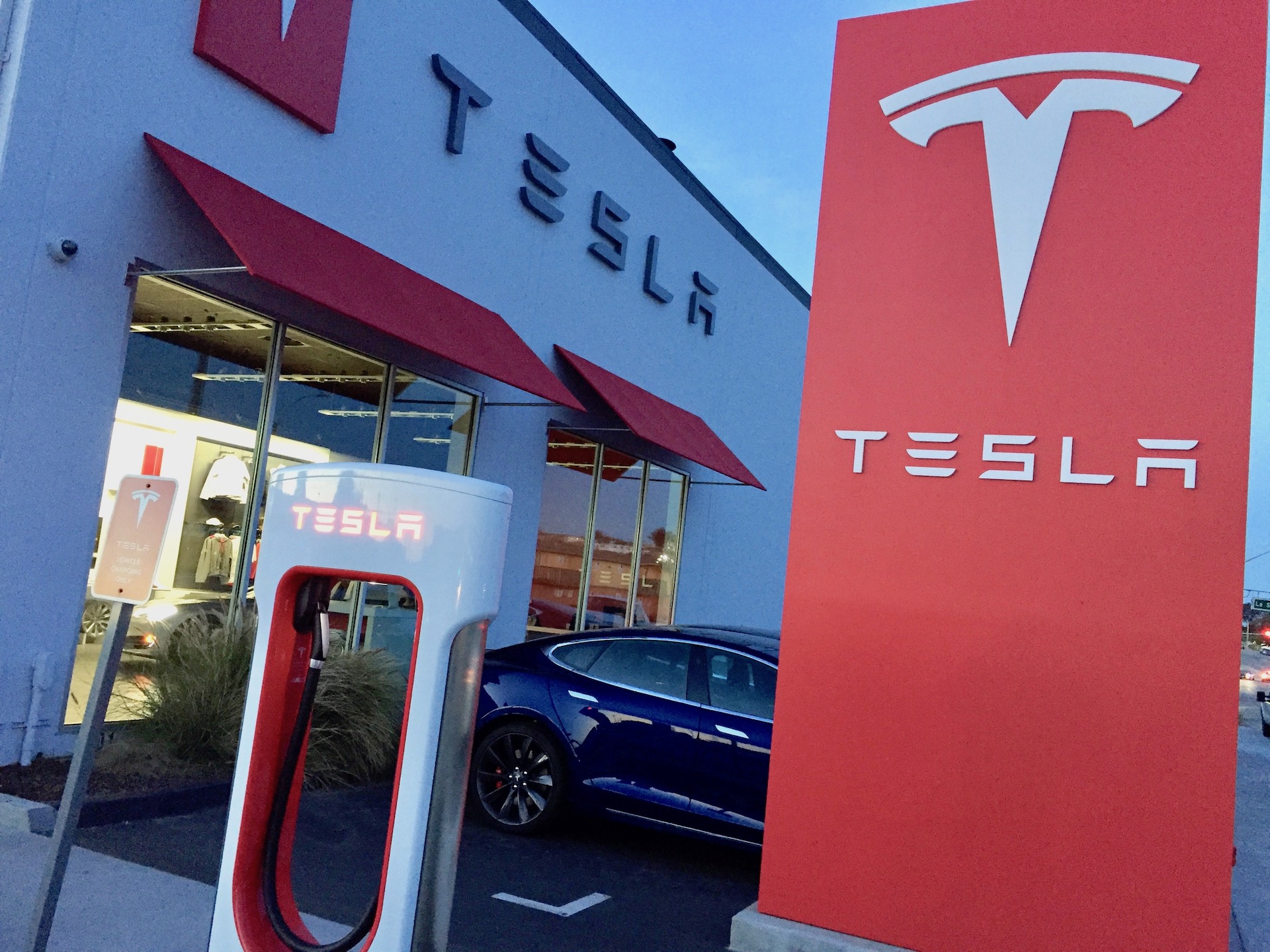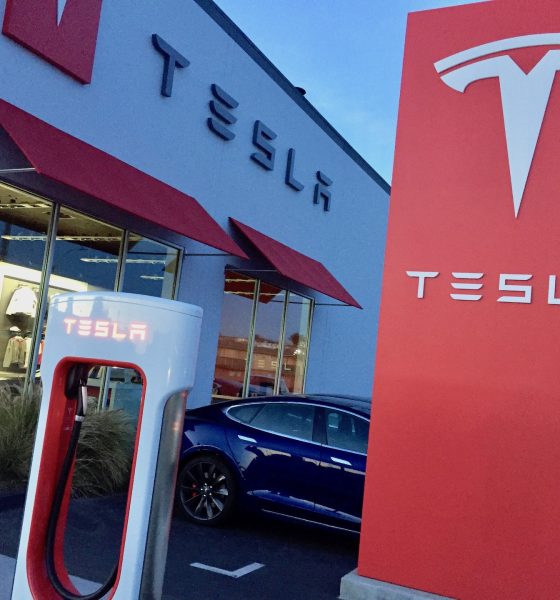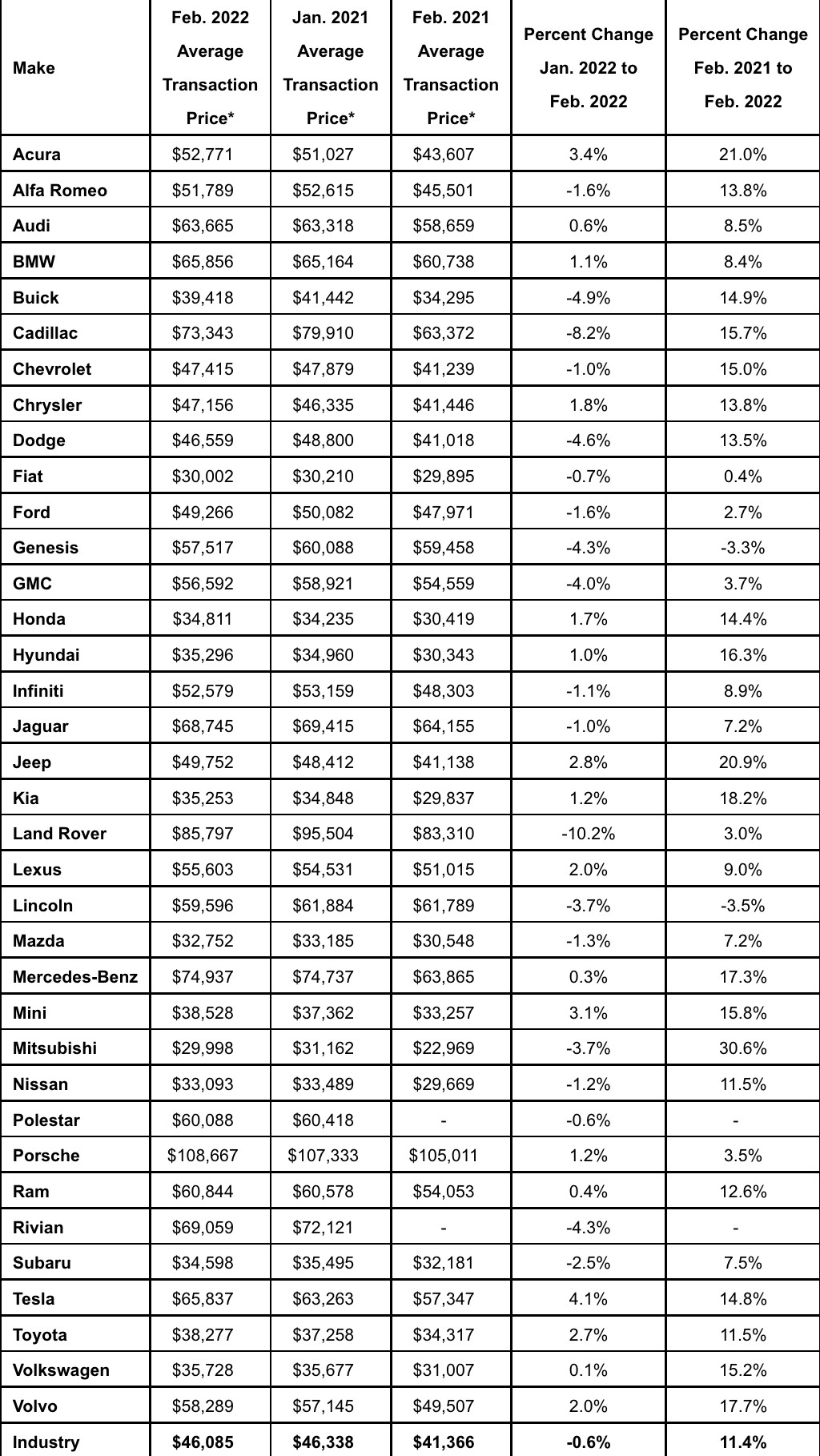

News
Tesla holds highest average transaction price increase in 2022, Musk warns of ‘inflation pressure’
Tesla and SpaceX are experiencing substantial “inflation pressure,” according to CEO Elon Musk, who hinted toward potential price increases for his electric automotive company’s products in the coming months. It appears inflation pressure has already contributed to increases in Tesla’s average transaction price, which spiked more than any other major automaker from January to February 2022, according to Kelley Blue Book data.
Last night, CEO Elon Musk indicated both Tesla and SpaceX were experiencing incredible pressure from inflation, which would likely increase the costs of its products. “Tesla & SpaceX are seeing significant recent inflation pressure in raw materials & logistics,” Musk said. “And we are not alone.”
Tesla & SpaceX are seeing significant recent inflation pressure in raw materials & logistics
— Elon Musk (@elonmusk) March 14, 2022
It is no secret inflation has already contributed to price increases across nearly every sector, whether it be technology, automotive, or another consumer good. Tesla has not been invincible in recent months, being forced to increase prices of its vehicles due to raw materials availability, especially for electric vehicle batteries.
KBB data displayed the average transaction cost of every major automaker in January and February 2022. Tesla saw the most drastic increase in average transaction price from January 2022 to February 2022, with the cost increasing by 4.1 percent. Acura had the next-highest increase from January to February at 3.4 percent. Overall, the industry saw a 0.6 percent decrease in new vehicle cost during the first two months of 2022.
Tesla is just one of many in terms of costs rising substantially from February 2021 to February 2022. With the industry seeing an average 11.4 percent increase in transaction price Year-Over-Year in February, Tesla’s average surged 14.8 percent, a far cry from Jeep and Acura, who saw the highest increase with 20.9 and 21 percent, respectively.
Credit: Kelley Blue Book
“Consumers are paying near top dollar for new vehicles as prices remain high and incentives fall to a record low,” Michelle Krebs of Cox Automotive said. “With prices for oil and gas, along with commodities like metals used to build vehicles, soaring due to Russia’s invasion of Ukraine, automakers may be compelled to try to offset their increasing costs by raising vehicle prices. The Ukraine situation is causing additional disruption to the automotive supply chain which makes the likelihood of growing inventory, which remains stuck at low levels, less of a sure thing.”
RELATED:
Ukraine confirms second batch of Starlink terminals from Elon Musk have arrived
Inflationary pressure, especially with raw materials, including nickel, has perhaps delayed the rollout of new strategies for electric car companies. While many automakers, including Tesla, Rivian, Ford, and others, have committed to the potential use of nickel-based battery packs. However, Nickel prices have surged to $100,000 per metric ton on the London Metals Exchange, leading to a trading freeze.
Electric car owners are not the only ones feeling intense economic pressure. Combustion engine drivers are watching prices at the pump swell to near $6 per gallon in some instances. AAA data has the average cost of a gallon of gas in the U.S. at $4.325 per gallon, a nearly $1.50 increase in the past year.
I’d love to hear from you! If you have any comments, concerns, or questions, please email me at joey@teslarati.com. You can also reach me on Twitter @KlenderJoey, or if you have news tips, you can email us at tips@teslarati.com.

Elon Musk
Starlink achieves major milestones in 2025 progress report
Starlink wrapped up 2025 with impressive growth, adding more than 4.6 million new active customers and expanding service to 35 additional countries, territories, and markets.

Starlink wrapped up 2025 with impressive growth, adding more than 4.6 million new active customers and expanding service to 35 additional countries, territories, and markets. The company also completed deployment of its first-generation Direct to Cell constellation, launching over 650 satellites in just 18 months to enable cellular connectivity.
SpaceX highlighted Starlink’s impressive 2025 progress in an extensive report.
Key achievements from Starlink’s 2025 Progress
Starlink connected over 4.6 million new customers with high-speed internet while bringing service to 35 more regions worldwide in 2025. Starlink is now connecting 9.2 million people worldwide. The service achieved this just weeks after hitting its 8 million customer milestone.
Starlink is now available in 155 markets, including areas that are unreachable by traditional ISPs. As per SpaceX, Starlink has also provided over 21 million airline passengers and 20 million cruise passengers with reliable high-speed internet connectivity during their travels.
Starlink Direct to Cell
Starlink’s Direct to Cell constellation, more than 650 satellites strong, has already connected over 12 million people at least once, marking a breakthrough in global mobile coverage.
Starlink Direct to Cell is currently rolled out to 22 countries and 6 continents, with over 6 million monthly customers. Starlink Direct to Cell also has 27 MNO partners to date.
“This year, SpaceX completed deployment of the first generation of the Starlink Direct to Cell constellation, with more than 650 satellites launched to low-Earth orbit in just 18 months. Starlink Direct to Cell has connected more than 12 million people, and counting, at least once, providing life-saving connectivity when people need it most,” SpaceX wrote.
News
Tesla Giga Nevada celebrates production of 6 millionth drive unit
To celebrate the milestone, the Giga Nevada team gathered for a celebratory group photo.

Tesla’s Giga Nevada has reached an impressive milestone, producing its 6 millionth drive unit as 2925 came to a close.
To celebrate the milestone, the Giga Nevada team gathered for a celebratory group photo.
6 million drive units
The achievement was shared by the official Tesla Manufacturing account on social media platform X. “Congratulations to the Giga Nevada team for producing their 6 millionth Drive Unit!” Tesla wrote.
The photo showed numerous factory workers assembled on the production floor, proudly holding golden balloons that spelled out “6000000″ in front of drive unit assembly stations. Elon Musk gave credit to the Giga Nevada team, writing, “Congrats on 6M drive units!” in a post on X.
Giga Nevada’s essential role
Giga Nevada produces drive units, battery packs, and energy products. The facility has been a cornerstone of Tesla’s scaling since opening, and it was the crucial facility that ultimately enabled Tesla to ramp the Model 3 and Model Y. Even today, it serves as Tesla’s core hub for battery and drivetrain components for vehicles that are produced in the United States.
Giga Nevada is expected to support Tesla’s ambitious 2026 targets, including the launch of vehicles like the Tesla Semi and the Cybercab. Tesla will have a very busy 2026, and based on Giga Nevada’s activities so far, it appears that the facility will be equally busy as well.
News
Tesla Supercharger network delivers record 6.7 TWh in 2025
The network now exceeds 75,000 stalls globally, and it supports even non-Tesla vehicles across several key markets.

Tesla’s Supercharger Network had its biggest year ever in 2025, delivering a record 6.7 TWh of electricity to vehicles worldwide.
To celebrate its busy year, the official @TeslaCharging account shared an infographic showing the Supercharger Network’s growth from near-zero in 2012 to this year’s impressive milestone.
Record 6.7 TWh delivered in 2025
The bar chart shows steady Supercharger energy delivery increases since 2012. Based on the graphic, the Supercharger Network started small in the mid-2010s and accelerated sharply after 2019, when the Model 3 was going mainstream.
Each year from 2020 onward showed significantly more energy delivery, with 2025’s four quarters combining for the highest total yet at 6.7 TWh.
This energy powered millions of charging sessions across Tesla’s growing fleet of vehicles worldwide. The network now exceeds 75,000 stalls globally, and it supports even non-Tesla vehicles across several key markets. This makes the Supercharger Network loved not just by Tesla owners but EV drivers as a whole.
Resilience after Supercharger team changes
2025’s record energy delivery comes despite earlier 2024 layoffs on the Supercharger team, which sparked concerns about the system’s expansion pace. Max de Zegher, Tesla Director of Charging North America, also highlighted that “Outside China, Superchargers delivered more energy than all other fast chargers combined.”
Longtime Tesla owner and FSD tester Whole Mars Catalog noted the achievement as proof of continued momentum post-layoffs. At the time of the Supercharger team’s layoffs in 2024, numerous critics were claiming that Elon Musk was halting the network’s expansion altogether, and that the team only remained because the adults in the room convinced the juvenile CEO to relent.
Such a scenario, at least based on the graphic posted by the Tesla Charging team on X, seems highly implausible.








